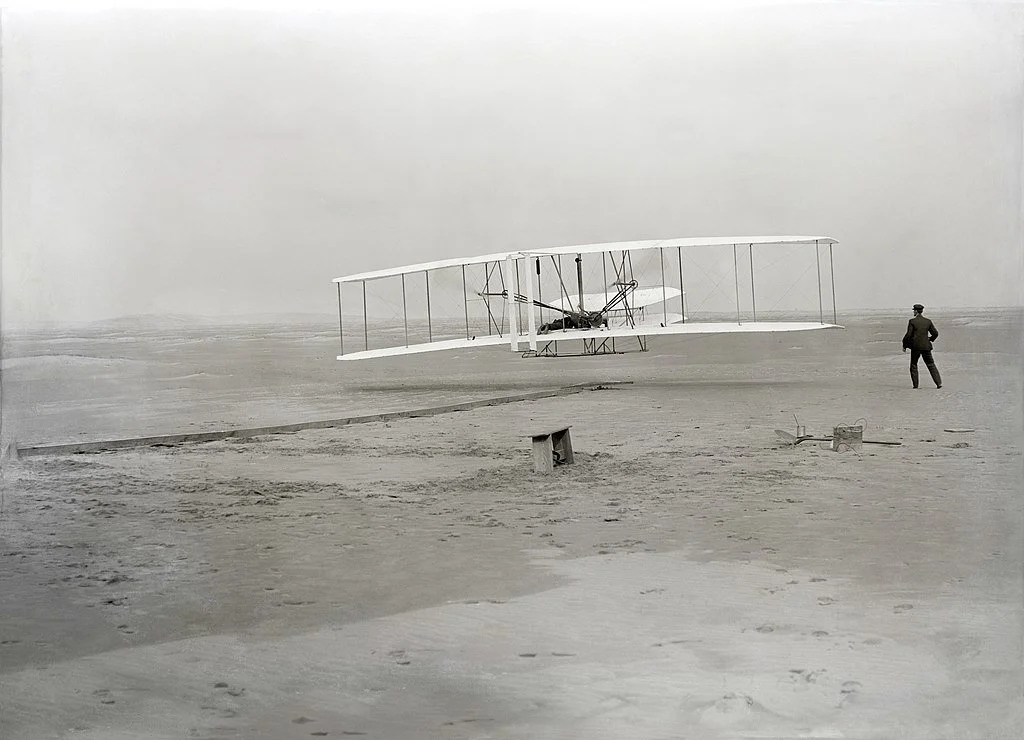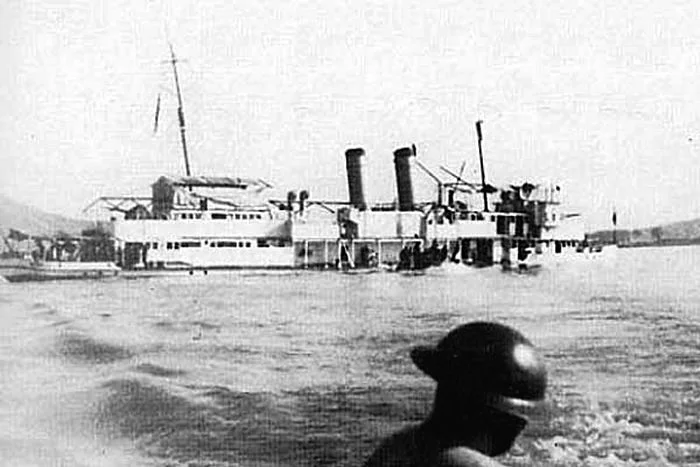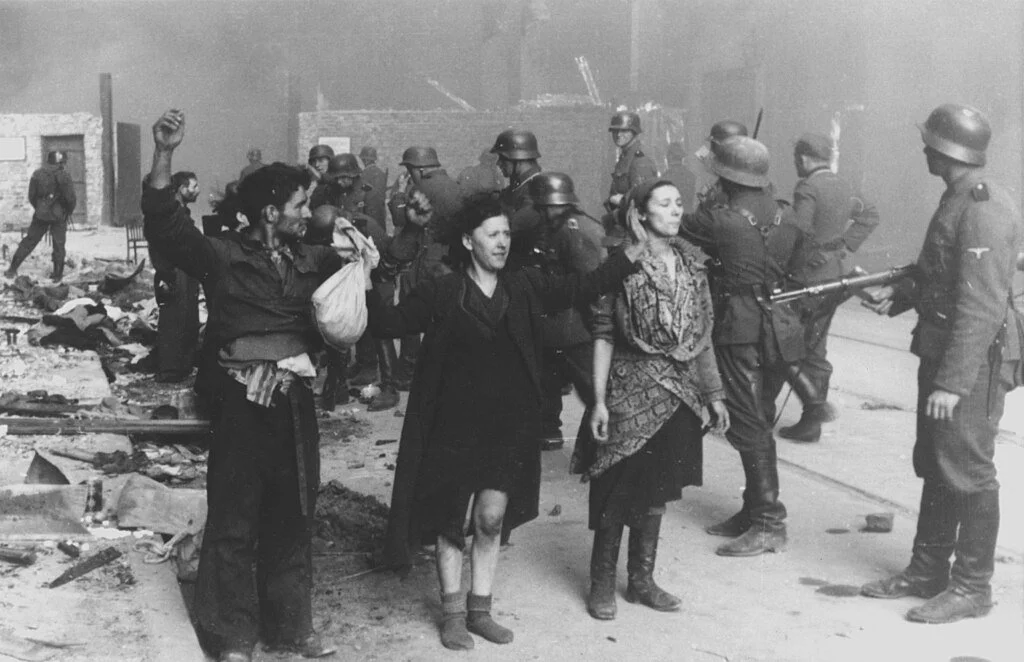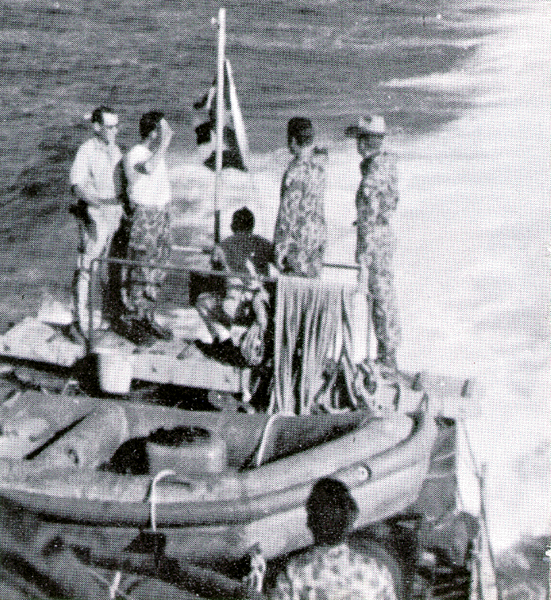As inconceivable as it may sound, there was an occasion when two NATO allies were considered in a state of war, albeit limited. It was the only time that that two NATO allies were in a heated exchange and exchanged fire. The incident was called the Turbot War (named after a type of fish which was the cause of this strange altercation). This minor escalation was between Canada and Spain between March 9 and April 16, 1995 and fought over a dispute involving their respective international fishing rights in what Canada saw as their territorial waters. To call it a war may be an exaggeration, but that was the term adopted by the media to create sensationalism. The incident brought no formal declarations of war, but shots were fired in anger by the Canadian Navy upon Spanish vessels and at one point even involved the deployment of the Spanish Navy in retaliation.
Steve Prout explains.
El Vigía, a vessel sent by Spain to protect its fishing fleet. Source: Manuel Luís Soto Sáenz, Cádiz, 11 de Octubre de 2008, available here.
Fishing Rights and Canadian Waters
This article does not intend to delve into the legal complexities of international fishing rights but give an outline of the causes. The Canadians complained that their fishing rights were being violated by various foreign trawlers citing the regulations set by the North Atlantic Fisheries Organization (NAFO). On this occasion Canada accused Spain and Portugal of trespassing and of overfishing in Canadian territorial waters. It was a claim both Spain and Portugal disputed.
The Canadians had an established shipping perimeter two hundred nautical miles from their shores. This perimeter had been agreed in 1982 by the Third United Nations Convention on the law of the sea. It took until November 1994 for an exclusive economic zone finally to be recognized. It would not be enough to resolve the ongoing issues and was either ignored or misunderstood. The EU meanwhile issued a ruling which gave European vessels an increased quota in a disputed zone close to what Canada claimed was within her territorial waters.
The matter of overfishing had been a concern for Canada since the 1970s, but little had been done to address their issues. These concerns were made more urgent by the Grand Banks Fishery collapse, which occurred due to over overfishing of cod over the years. Fishing communities had been devastated and any further damage or a repeat of this over the turbot stocks would not be allowed or tolerated.
The war was named after the type of fish known as Turbot (also known as Greenland Turbot and Greenland Halibut) that was being decimated by the presence of these trawlers. Brian Tobin, a Canadian politician and Director of the Department of Fisheries and Oceans championed the Canadian side of the dispute. Canada claimed that there were over fifty violations of their international waters and their attempts to reach out to the Spanish and Portuguese governments met no response and so the Canadians felt that more assertive action should be taken.
The beginning of hostilities
On March 9, 1995, a Canadian air patrol plane spotted the Spanish trawler Estai fishing in Canadian waters. The Canadian Coast Guard and Navy vessels, led by Sir Wilfred Grenfell, were launched and headed towards the Spanish trawler. On spotting the approaching Canadian vessels the skipper of the Estai, Captain Enrique Davila Gonzalez, ordered the crew to cut their nets in a desperate attempt to remove evidence of their fishing activities and attempted an escape.
The chase then developed, escalated, and “shots fired in anger”. The Estai only stopped when the Canadian Coast Guard vessel Cape Roger fired a burst of machine gun fire across its bows and warned that the next shots would be aimed at the Spanish trawler itself. The event was not just isolated to the Estai because other Spanish fishing boats had come to assist the Estai but were repelled by high-pressure water cannons. The Estai was then boarded by DFO officers who discovered numerous infringements of Canada’s fishing laws. A Canadian trawler was used to recover the Estai’s net from the seabed. A number of other infractions by the Spanish crew were found by the Canadians. It was soon found that the net had a much smaller mesh size than Canadian law allowed. The crew of the Estai were subsequently arrested with the trawler being towed back to Canada (the city of St. John’s) where it was displayed. The incident then was widely publicized to the world with the blame being put onto Spain by Canada. The Spanish trawlers attempt to hide the incriminating evidence failed and an international furor followed when Canada seized the vessel which in turn caused the European Union to accuse Canadas of acts of piracy.
The Canadians used the publicity to their maximum advantage. A crowd of over five thousand Canadians gathered to witness the Estai being impounded in St. John’s harbor, with Brian Tobin swiftly arranging a press conference in New York City outside of the United Nations headquarters. Tobin ordered the Estai’s net suspended from a crane while he addressed the world’s media, explaining in detail how the small mesh size meant that the Spanish vessel had been fishing illegally. Tobin was steadfast in his view that Canadian law applied in the waters where the Estai was fishing and furthermore Canada had the legal authority to act against the Spanish vessel and arrest the crew.
Spain escalates and the EU is divided
A small drama back in 1995 looked and felt quite different at the time as this affair escalated and caused diplomatic divisions amongst EU states and fellow NATO allies. Britain, for example, backed Canada and other EU states supported Spain, at least from a respectable distance. Meanwhile, in retaliation to the seizure, Spain dispatched a Serviola-class gunboat, armed with machine guns and cannons, to protect the Spanish trawlers operating in the area from the Canadian navy and coastguard. The diplomatic exchanges intensified and became heated. Spain demanded the immediate release of the trawler and the crew claiming Canada had no right to impound the boat or its crew who were Spanish nationals. They did however concede that the net used by the trawler was illegal under Canadian law, but they still maintained that they were fishing outside of Canada’s EEZ in international waters. Canada cited the 1982 Law of the Sea Convention, which stated that they had the legal right to protect fish stocks that straddle their EEZ (Exclusive Economic Zone) and international waters. They asserted that Canadian law applied to all vessels fishing in these waters. The technicalities continued for and against continued.
Canada was further vindicated by an immediate inspection of the fishing catch. The Canadian claims were further strengthened when an independent inspection of the Estai reported that seventy to eighty percent of the turbot catch within the Spanish vessel were undersized or protected species. More damningly the trawler also possessed false bulkhead that revealed secret storage tanks that contained twenty-five tons of the heavily protected American plaice - which had been under a protective moratorium since 1992 due to declining stocks.
For Spain there was more damning evidence of illegal activity that was discovered aboard the trawler. The captain of the Spanish trawler had maintained two differing sets of logbooks recording his catch which was a favorite trick of corrupt skippers who needed to hide from the authorities the fact that they had caught over their quotas. This explains the desperate attempt by the Estai to cut its nets and outrun the Canadian Navy.
Europe is temporarily divided
The matter soon involved some of the wider international community. In fact, European countries were split over who they supported in the dispute. Britain and Ireland took Canada’s side. The rest of the European Union supported the Spanish. Meanwhile, the dispute had degenerated into churlish name-calling, with the Spanish claiming the Canadians had behaved like “pirates,” while Canada accused Spain of being “conservation criminals” and “cheats.” British Prime Minister John Major (1990-1997) risked turning the EU community against Britain by reiterating staunch support for the Canadians. When the issue of the EU bringing trade sanctions against Canada was proposed, Major made it clear that Britain would use its veto to block any such sanctions from going ahead.
Many British and Irish trawlers began flying the Canadian flag to show which side they supported in the dispute, which antagonized a European ally and member of NATO. A Cornish trawler, called Newlyn, was challenged by a French patrol boat whom the latter mistook as being a Canadian ship because it was flying the Canadian flag. The French backed down when they realized the ship was British and no further action was taken. What if that had been a Canadian trawler? Now France would have been at military odds with their NATO ally. Thankfully, the incident of the “Turbot War” took on a more proportionate response later, but the incident had a little more milage left in terms of rhetoric and naval mobilization before that resolution was found.
Canada later released Captain Gonzalez and the crew of the Estai, and, once the owners of the Spanish vessel had paid a fine of $500,000, the Canadians released the ship and the crew who then sailed back home. The concluded the matter of the Estai but the dispute continued.
Canada still refused to enter any negotiations until all foreign fishing vessels left the disputed area on the edge of their EEZ. Spain steadfastly ignored this and sent trawlers back to the disputed Canadian waters, this time accompanied by a Spanish navy patrol boat to protect them. Spain also began to prepare a more serious task force consisting of frigates and tankers to head to the area. It was no surprise that in late March talks between the two nations broke down. The naval detachments escalated as Canada began to increase the numbers of its naval and coast guard vessels across the edge of their EEZ, along with a higher number of surveillance air patrols. Brian Tobin also declared that he was prepared to use net cutters to sever the trawl nets of Spanish vessels (in the same way as the Icelandic Coast Guard did to British trawlers in the Cod Wars of the 1970s). It was also reported that Canadian Prime Minister Jean Chrétien had authorized his navy to fire at any armed Spanish Navy ships that sailed in or around Canada’s EEZ.
The pressure built up in Europe as they baulked at the very real possibility of actual conflict breaking out. The EU eventually put pressure on Spain to back down and agree to a deal. Despite Spanish objections they acquiesced, and a deal was reached on April 5. The result was a win for Canada. Spain was forced to leave the disputed zone and Canada’s right to eject foreign fishing vessels from the area, using military force, if necessary, was accepted. Under the deal, Canada refunded the $500,000 fine to the owners of the Estai. And with that, the Turbot War ended.
Conclusion
The incident has now been forgotten although it is certain to remain in the memories of the fishing community and the crew of the Estia. Canada understandably needed to protect her fisheries and her industry and showed the level of force that she was prepared to take - and indeed did so to the extent that the international community was also taken by surprise by her uncharacteristically aggressive response. This was understandable given the Grand Banks fisheries collapse just three years before. Canada still felt the severe economic backlash from hardship due to fish stocks collapsing and was not going to allow their turbot stocks to be decimated by foreign vessels in the same way as cod stocks previously. She deserved the favorable outcome.
While the dispute on the surface focused more on fishing rights, beneath the surface the tension from this affair tested for a brief time the relationships between NATO allies. Countries belonging to NATO and the larger European Economic Block were at odds with each other but despite this applying the actual word “war” to describe this affair does appear disproportionate. The level of military engagement was limited. Interestingly we are left with a question: how would NATO have dealt with a quarrel within its own internal structure? The matter has never been tested and hopefully never will be. Of course, the worst-case scenarios would have been highly unlikely as sensible heads would have prevailed over any impasse.
It does go to show that underneath the solidarity of an alliance like NATO there does exist on occasions underlying tensions and altercations but rarely have shots been fired in anger. In 1972 the Cod Wars again concerning fishing rights saw the UK and Iceland also disagree, but no shots were fired in anger and no forces were mobilized. However, the threat of Iceland withdrawing from NATO expedited a climb down by the UK. On both occasions it was not the Warsaw Pact that was the only cause of disquiet for this organization. It was a not so simple matter of troublesome fishing rights. Currently the NATO alliance is experiencing more stresses and strains as the US continues to press some of its European allies to increase spending levels and prove their commitment to the NATO alliance. Nothing has ever erupted and dissipated like the long-forgotten Turbot incident.
Did you find that piece interesting? If so, join us for free by clicking here.
















